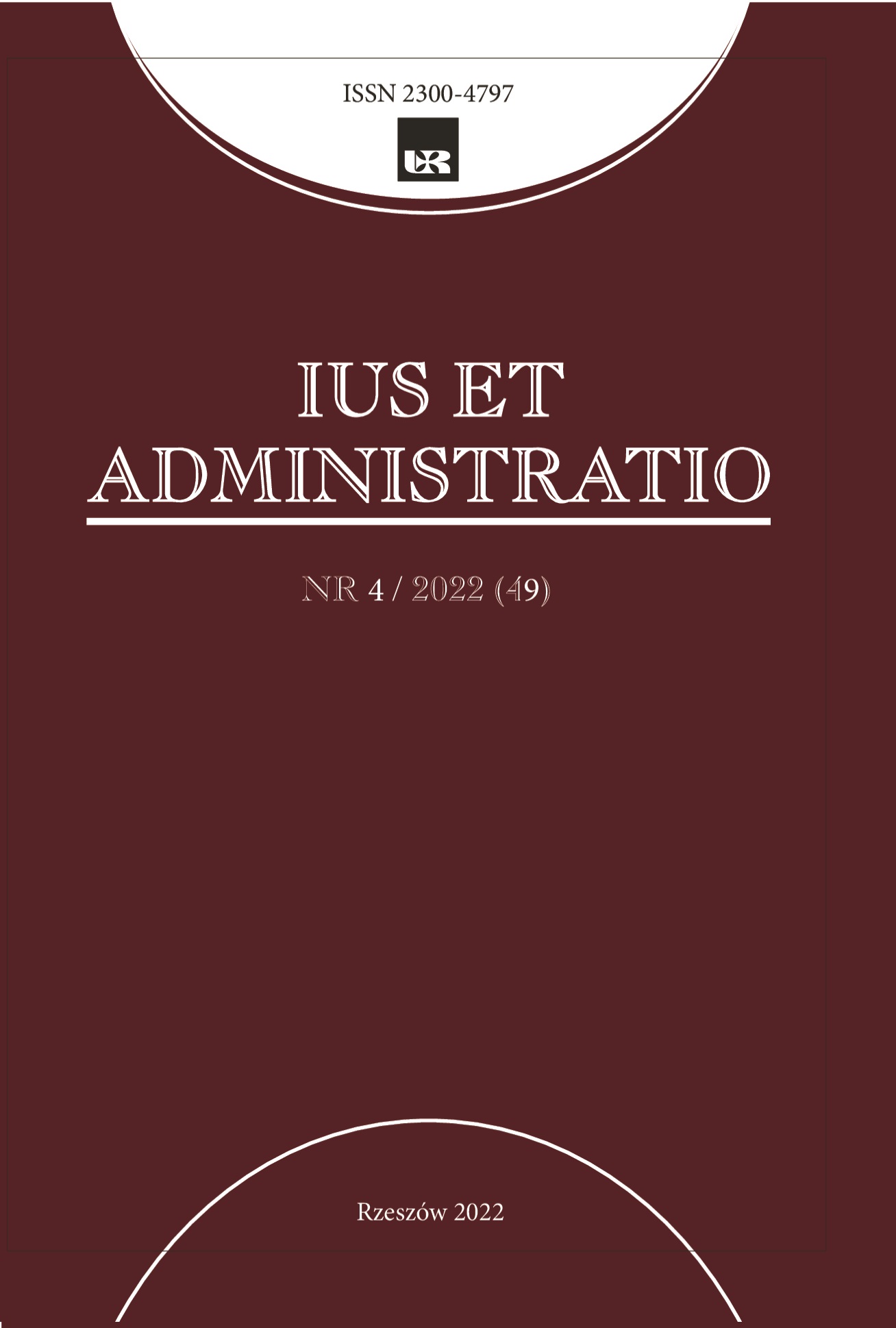Is there a perfect crime? Discussion of forensic traces with particular emphasis on their classification
DOI:
https://doi.org/10.15584/iuseta.2022.4.4Keywords:
forensic trace, functions of forensic traces, classification of forensic traces, dactyloscopy, mechanoscopic traces, traceology, phonoscopy, forensic biology, forensic physical chemistry, odor molecules, specific pressures in the forensic industryAbstract
The aim of the author of the article is to present arguments for the thesis that there is no perfect crime, and forensic traces left at the scene of the crime are, for the most part, the basis for detecting and apprehending the perpetrator of the crime, taking their classification as the criterion. The initial part discusses the issue of defining the concept of a forensic trace, followed by their functions and division. For the purposes of the work, they were divided according to the organization of the matter creating the trace, the place of occurrence of traces, the type and scope of identification research, the method of leaving traces, the size of material objects, the direction of action of resultant forces and the department of knowledge. The method of observation and critical analysis was used to write the article, which led the author to the conclusion that there is no perfect crime, but it should be remembered how important the human factor is in the entire process of examining traces.
Downloads
References
Bogusz I., Bogusz M., Ślady kryminalistyczne dla słuchaczy szkolenia zawodowego podstawowego, Legionowo 2015.
Bogusz I., Bogusz M., Technika kryminalistyczna ślady biologiczne, Legionowo 2015.
Brachmański S., Zgiełk źródłem informacji w badaniach fonoskopijnych, Wrocław 2012.
Gawliński A., Daktyloskopia: geneza i wybrane zagadnienia współczesne, „Kortowski Przegląd Prawniczy” 2013, nr 4.
Gruza E., Goc M., Tomaszewski T., Co nowego w kryminalistyce – przegląd zagadnień z zakresu zwalczania przestępczości, Warszawa 2010.
Gruza E., Goc M., Tomaszewski T., Kryminalistyka – czyli rzecz o metodach śledczych, Oficyna Wydawnicza Łośgraf, Warszawa 2011.
Gruza E., Goc M., Tomaszewski T., Kryminalistyka, czyli o współczesnych metodach dowodzenia przestępstw, Wolters Kluwer, Warszawa 2020.
Gurgul J., Kryminalistyczne znaczenie dowodów rzeczowych, „Problemy Kryminalistyki” 1979, nr 141.
Hanausek T., Kryminalistyka. Zarys wykładu, Kraków 2005.
Hołyst B., Kryminalistyka, Wolters Kluwer, Warszawa 2018.
Ignaszak M., Źródła błędów poznawczych w badaniach śladów kryminalistycznych, „Problemy Kryminalistyki” 2009, 303.
Jakubowska E., Lewna A., Wykorzystanie cheiloskopii w praktyce śledczej, Białystok 2014.
Kała M., Wilk D., Wójcikiewicz J., Zuba D., Ekspertyza sądowa zagadnienia wybrane, Warszawa 2023.
Kasprzak J., Młodziejowski B., Kasprzak W., Kryminalistyka zarys systemu, Difin, Warszawa 2015.
Kasprzak M., Ślady zbrodni – co potrafi współczesna kryminalistyka?, rozm. przep. K. Głowacka, Radio Naukowe 2022.
Mazepa J., Vademecum technika kryminalistyki, Wolters Kluwer, Warszawa 2009.
Pikulski S., Procesowe i kryminalistyczne aspekty możliwości wykorzystania śladów zapachowych, „Studia Prawnoustrojowe” 2002, nr 1.
Rodowicz L., Żywotność cech indywidualnych na obuwiu nadal używanym, „Problemy Kryminalistyk” 1994, nr 203.
Rzeszotarski J., Kompedium badań fonoskopijnych, „Prokuratura i Prawo” 2007.
Skorek S., Identyfikacja pistoletu na podstawie badań łusek i pocisków, „Prok. i Pr.” 2012, nr 118.
Wąs-Gubała J., Ślad kryminalistyczny jako przesłanka dla zwalczania zagrożeń związanych z działalnością przestępczą, „Kultura Bezpieczeństwa” 2019, nr 35.
Widacki J., Kilka uwag o identyfikacji zapachów ludzkich przez psa na użytek procesu karnego, „Palestra” 1998.
Wilk D., Kryminalistyka przewodnik, Wydawnictwo „Dom Organizatora”, Toruń 2013.
Zdybel R., Osmologia dowody zapachowe w kryminalistyce, Wydawnictwo Kamena, Przemyśl 2009.
Żywucka-Kozłowska E., Anatomia kryminalistyczna. Wybrane zagadnienia morfologii, patomorfologii, fizjologii, tanatologii i toksykologii, Wyd. UWM, Olsztyn 2021.
Downloads
Published
How to Cite
Issue
Section
License
Copyright (c) 2022 Ius et Administratio

This work is licensed under a Creative Commons Attribution-NonCommercial-NoDerivatives 4.0 International License.

